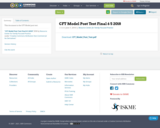
This document is the CFT Model post-test.
- Subject:
- Career and Technical Education
- Education
- Social Science
- Material Type:
- Lecture Notes
- Date Added:
- 06/07/2018

This document is the CFT Model post-test.
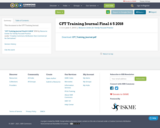
This document is the CFT Training Journal.

This guide answers the questions:
What is OER?
Why Adopt OER?
How do you find and use OER?
How do you embracing Open Pedagogy?
Includes a sample open pedagogy assignment: Celebrating Diversity Libguide

This is a college course for new students. This course uses an OER textbook available online or a low-cost print text. Topics covered are study strategies, time-management, test-taking strategies, student health, culture, college resources, and many more important topics for new college students to be successful. .

Word Count: 38881
(Note: This resource's metadata has been created automatically by reformatting and/or combining the information that the author initially provided as part of a bulk import process.)
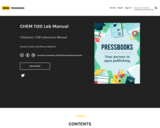
Chemistry 1120 Laboratory Manual
Word Count: 32979
(Note: This resource's metadata has been created automatically by reformatting and/or combining the information that the author initially provided as part of a bulk import process.)

The Open for Antiracism (OFAR) Program – co-led by CCCOER and College of the Canyons – emerged as a response to the growing awareness of structural racism in our educational systems and the realization that adoption of open educational resources (OER) and open pedagogy could be transformative at institutions seeking to improve. The program is designed to give participants a workshop experience where they can better understand anti-racist teaching and how the use of OER and open pedagogy can empower them to involve students in the co-creation of an anti-racist classroom. The capstone project involves developing an action plan for incorporating OER and open pedagogy into a course being taught in the spring semester. OFAR participants are invited to remix this template to design and share their projects and plans for moving this work forward.

meaning of circle
elements of the circle
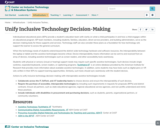
Unify Inclusive Technology Decision-Making
Share:
Individualized educational plans (IEPs) provide a student’s education team with clarity on what a child participates in and how a child engages within an educational program. IEP team members, including students, families, educators, direct service providers, and building administrators, serve as the decision-making body for these supports and services. Technology staff can also consider these plans as a foundation for how technology will support the learner to access the general curriculum.
When the technology needs of students extend beyond the district-wide technology hardware and software resources, the interoperability between the laptop or tablet and the assistive technologies become critical. Device interoperability means information can be sent to and received from an array of devices, including assistive technologies such as screen readers, and other accessibility tools seamlessly.
Students with physical or sensory (visual or hearing) support needs may require such specific assistive technologies. Such devices include single switches, expanded keyboards, screen readers, or captioning programs. TechMatrix is an online database provided by the American Institute for Research that provides more information about available assistive technologies. In addition, some students may have tools such as digital pens or VR sets written in their IEPs to support learning opportunities. Similarly, such tools should sync seamlessly with the student devices.
Actions to unify inclusive technology decision-making with interoperable assistive technologies include:
Collaborate across the IT, EdTech, and AT leadership teams to choose devices and ensure the interoperability of such devices.
Require the purchase of accessible, interoperable technologies by including such requirements in requests for proposals (RFPs) and district contracts. Ensure all partners, such as state educational agencies, regional educational service agencies, and non-profits understand and mimic these practices.
Include individuals with disabilities in procurement and purchasing decisions, such as students, parents, organizational partners, or community volunteers.
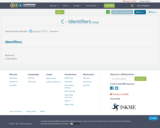
C Identifiers
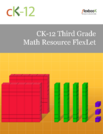
CK-12 Third Grade Math Resource FlexLet is intended to be used as a resource to help students get back up to speed. Teachers can assign sections to a class or parents can walk through sections with young learners. Each section is also paired with short videos to walk through examples as well as practice questions to check for mastery.
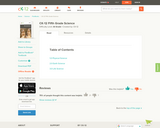
Fifth Grade Science curriculum used and maintained by the Utah Board of Education
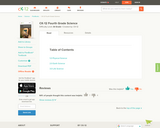
Physical, Earth, and Life Science for fourth grade. Used and maintained by the Utah State Board of Education
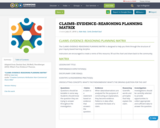
Adapted from:
Zembal-Saul, McNeill, Hershberger (2013). What's Your Evidence? Pearson.

This CLE presentation examines the use of simulations to teach student how to navigate ship and boats. The presentation discusses why the tools are appropriate for this constructivist learning.

The Content and Language Integrated Learning (CLIL) course, offered by the Faculty of Education in the Bilingual Primary Education Program, equips future educators with the skills to integrate content learning with English language acquisition. Over 48 hours of classroom instruction and 96 hours of independent work, students will develop competencies in designing, applying, and evaluating CLIL-based activities across six knowledge areas: Natural Sciences, Mathematics, Social Sciences, Arts, Technology, and English. This course prepares educators to create innovative, bilingual learning environments, fostering comprehensive education in a global context.
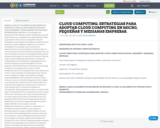
DEBIDO A QUE ACTUALMENTE SE ENCUENTRA EN REVISIÓN LA TESIS, EL DOCUMENTO ES PRIVADO POR EL MOMENTO,
PRÓXIMAMENTE SE DARÁ MAS INFORMACIÓN. GRACIAS.
La Tecnología de la Información (TI) siempre ha sido considerada un punto importante en las organizaciones empresariales, desde la perspectiva de los costos y de gestión. Es parte integral de la tecnología y los modelos de negocio de las empresas y las ha obligado a adaptarse a las nuevas estrategias de tecnología. Con los avances de infraestructura en la tecnología de la información y la comunicación, los nuevos modos de programación y los nuevos modelos en su uso; han llegado también nuevas formas de denominar los servicios de Internet. Factores como la mercantilización de hardware, software de código abierto, la virtualización, la globalización de la fuerza de trabajo y los procesos ágiles de TI han apoyado el desarrollo de nuevos modelos de tecnología y negocios. La computación en nube o Cloud Computing ofrece a las organizaciones más opciones en cuanto a cómo gestionar las infraestructuras, ahorrar costes, trabajar en equipo remotamente y delegar responsabilidades a proveedores de servicios Cloud o terceros, sin que los usuarios tengan que tener ningún conocimiento de la infraestructura que hay detrás.
La mayoría de las empresas se esfuerzan por reducir su coste del área de TI a través de los medios de virtualización. Esta demanda de reducir el costo ha dado lugar a la innovación de la computación en nube, ya que ofrece una reducción en los costos de administración así como reducción de costos de infraestructura. Los grandes beneficios del Cloud Computing permiten la adquisición de recursos computacionales de manera rápida, flexible y con un menor costo de implementación para los usuarios o empresas y es rentable para los proveedores, pues a pesar de presentar algunos riesgos, el poder trabajar con este nuevo tipo de tecnología permite al usuario ahorrarse tanto licencias, como la administración de servicios y de los equipos necesarios. Además de beneficios en términos de costo, el Cloud Computing puede presentar beneficios de seguridad ya que brinda a las empresas normas y estándares de seguridad de los más altos niveles internacionales. Incluso presenta beneficios ambientales y sociales. Todo gracias a la arquitectura conformada por los modelos con los cuales trabaja el Cloud Computing, denominadas por sus siglas: SaaS, PaaS e IaaS, las cuales corresponden al software, plataforma e infraestructura como servicios respectivamente.
El Cloud Computing se encuentra todavía en una etapa infantil y es una nueva tecnología para las micro, pequeñas, medianas o nuevas empresas. Existen pocas guías y marcos para una óptima adopción, la mayoría de ellos no se encuentran en la lengua española o no engloban todos los factores y cuestiones necesarias para generar confianza en esta tecnología. Por lo tanto, la mayoría de las empresas no están muy seguras en adoptar la tecnología. La presente tesis aborda el problema de confianza en la adopción y se discuten y analizan las barreras que se pueden presentar al adoptar la computación en nube en una empresa. Se presentan una serie de estrategias, una hoja de ruta y un marco que servirán como una guía para enfrentar los desafíos, cuestiones o factores en términos de costo, seguridad, confidencialidad, confianza, cumplimiento normativo, cumplimiento legal y cumplimento-TI, así como los factores organizacionales/humanos. En esta tesis se detallan exhaustivamente todos los temas referentes al Cloud Computing desde sus antecedentes, evolución, arquitectura, tecnología, modelos de negocio, modelos de servicio, modelos de despliegue, proveedores del servicio, etc. y así se logre un profundo entendimiento del paradigma de computación en nube. La metodología fue realizada siguiendo los lineamientos de diferentes estándares, normas, protocolos, estándares, certificados y mejores prácticas internacionalmente reconocidas respecto a la seguridad de la información en un entorno de TI ó enfocadas a entornos de Cloud Computing como: ISO/IEC 27001, ISO/IEC 27002, COBIT, ITIL, KMIP, TLS/SSL y CCSK. Esto logra una metodología con procedimientos adecuados para la adopción de Cloud Computing en las micro, pequeñas y medianas empresas que ya adoptan servicios de nube o están interesados en su adopción.
Palabras clave: Computación en Nube, Cloud Computing, SaaS, IaaS, PaaS, Costo, Cumplimiento, Seguridad, Confidencialidad, Confianza, Micro, Pequeñas y Medianas Empresas, Adopción, Estrategias.
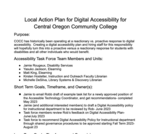
COCC has historically been operating at a reactionary vs. proactive response to digital accessibility. Creating a digital accessibility plan and hiring staff for this responsibility will hopefully turn this into a proactive versus a reactionary response for students with disabilities and all other individuals who would benefit.
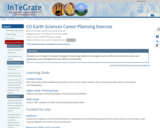
career investigation in specific fields of study

Word Count: 19669
(Note: This resource's metadata has been created automatically by reformatting and/or combining the information that the author initially provided as part of a bulk import process.)